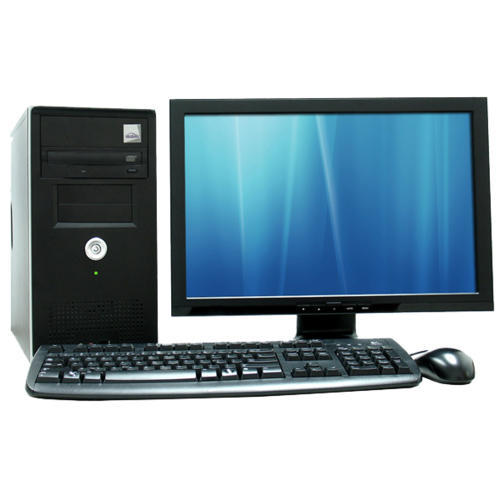As we
have seen that since its inception computer has been evolved a lot for the last
couple of decades. In earlier days a computer was such a big machine that
required space like a complete room and hence its maintenance cost was very
much far away from a common man. A common man could not have thought to have a
computer for his personal use. But nowadays one in every three person is using
a computer in one way or the other. From bulky machine to as small as like a
SIM card, this is possible because of the ever-changing technological world.
The old
adage “Necessity is the mother of inventions” holds true for the computer also
because computers are invented as a result of man’s search for fast, accurate
and reliable calculating devices.
The Evolution of Computers is defined in terms of various eras. Let us
take a look at them :
A) MANUAL ERA :
 |
| ABACUS |
The earliest device that qualifies as a digital a computer is the
‘Abacus’.
This device allows the user to
represent numbers by the position of beads on a rack.
Simple addition and subtraction can be carried out rapidly and
efficiently by positioning the beads on the rack appropriately.
Although Abacus was invented around 600 B.C. and was used by the Chinese
and Egyptians, it is still being used in the Far East.
Another manual calculating device to speed up the multiplication process
was John Napier’s bone or Cardboard Multiplication Calculator developed by a
Scottish man named John Napier.
A complete set of Napier bone’s
consists of rods, one for each of the digit 0 to 9 called bones, with number
carried on them.
It was designed in the 17th Century and they first appeared in print
in 1614.
B) MECHANICAL ERA :
The first mechanical calculator was developed by Wilhelm Schickhard, a
professor at the University of Tubingen.
In 1642, the young French philosopher and mathematician Blaise Pascal
developed another mechanical adding machine called Pascaline, which could add
and subtract numbers.
Pascaline used a system of gears and wheels.
Later in year 1671 Baron Gottfried Wilhelm Von Leibiniz of Germany
developed a similar mechanical calculator that could also perform
multiplication and division.
In early 19th Century, a Frenchman Joseph Jacquard invented a loom that
used punched cards to automatically control the manufacturing of patterned
cloth.
Charles Babbage , a 19 th Century professor at Cambridge University, is
considered to be the Father of Modern Digital Computers.
Babbage designed a Difference Engine in year 1822, which was capable of
performing automatic multistep calculation and can produced reliable
mathematical and statistical tablesautomatically.
In the year 1842, Babbage
conceived the new idea of Analytical Engine, that was intended to be completely
automatic.
It was capable of performing the basic arithmetic functions for any
mathematical problem at an average speed of 60 additions per minute.
The Analytical Engine incorporated many features of modern computers
including punched card instructions, internal memory , an arithmetic unit to
perform calculation any many other number of principals which have been shown
to be fundamental to the design of any digital computer.
Analytical Engine was programmable and in order to write program Babbage
employed ada Augusta Lovelace (daughter of poet Lord Byron) , who became the
first programmer in the world.
In the late 19th century a young statistician Harmen Hollerith, the
inventor of Punched Card Tabulating Machine , used it for processing Census
data.
Later in 1911, by merging several other firms, he formed IBM
Corporation.
In 20th Century, under the direction of George Stibitz of Bell Telephone
Laboratories, five large scale computer were developed by using
Electromechanical Relays and were called as Bell Relay Computers.
These computers were capable to perform calculations with a high speed
and accuracy.
The Mark-I computer, the world first general-purpose mechanical digital
computer was developed by Howard H.
Aiken, a professor of Physics at Harvard University, in collaboration
with IBM. Its designed was based on he technique already developed for punched
card machinery.
This machine was also known as Automatic Sequence Controlled Calculator,
and may be regarded as the first realization of Babbages’ Analytical Engine.
C) ELECTRONIC ERA :
The first electronic computer using 45 vacuum tubes (valves) for
internal logic and capacitors for storage and having the concept of binary
system was developed by John Vincent Atanasoff and his assistant Clifford Berry
in 1939.
This prototype of automatic electronic calculator was known as
Atanasoff-Berry Computer or ABC, capable of solving variables with a high
degree of accuracy.
In 1946, an all electronic version of Mark-I called Electronic Numerical
Integrator And Calculator (ENIAC) was developed by J. Presper Eckert and John
W. Mauchly at the University of Pennsylvania, USA.
It was the first large scale
fully electronic computer installed at Marryland to cater the military need.
The basic behind the stored program digital computers was developed by
Dr. John Von Neumann. And in 1952 by using the concepts of stored program, John
Von Neumann with his collaborator H.H. Goldsteine designed Electronic Discrete
Variable Automatic Calculator (EDVAC).
It was John Von Neumann who introduced the idea od storing both
instructions and data in the binary form.
In 1949, at Cambridge University, a group of British Scientists headed
by professor Maurice Wilkes developed Electronic Delay Storage Automatic
Calculator (EDSAC), that was capable of performing Addition operation in 1500
microseconds and multiplication operation in 4000 microseconds.
The UNIversal Automatic Computer (UNIAC) was first digital computer,
produced by many companies like IBM, Universal Accounting Company, General
Electronic Corporation etc .
It was first commercial large scale digital computer produced in 1951.
During the period of late 1940’s and early 1950’s many other stored
program computers like JOHNIAC, MANIAC, ILLIAC etc were developed.
Thank You!














1 Comments
it is really very amazing information .
ReplyDeletei prepare my presentation by read this